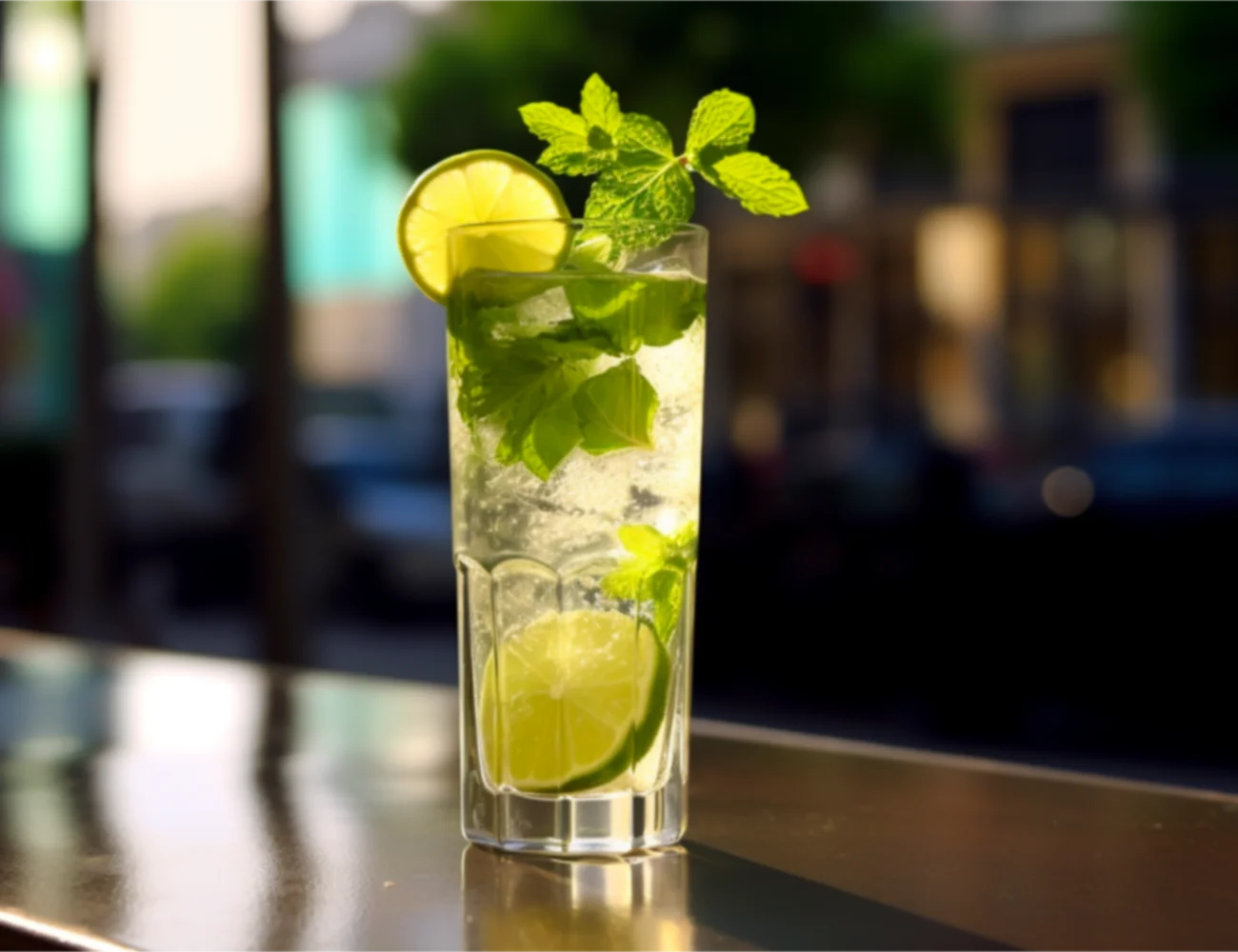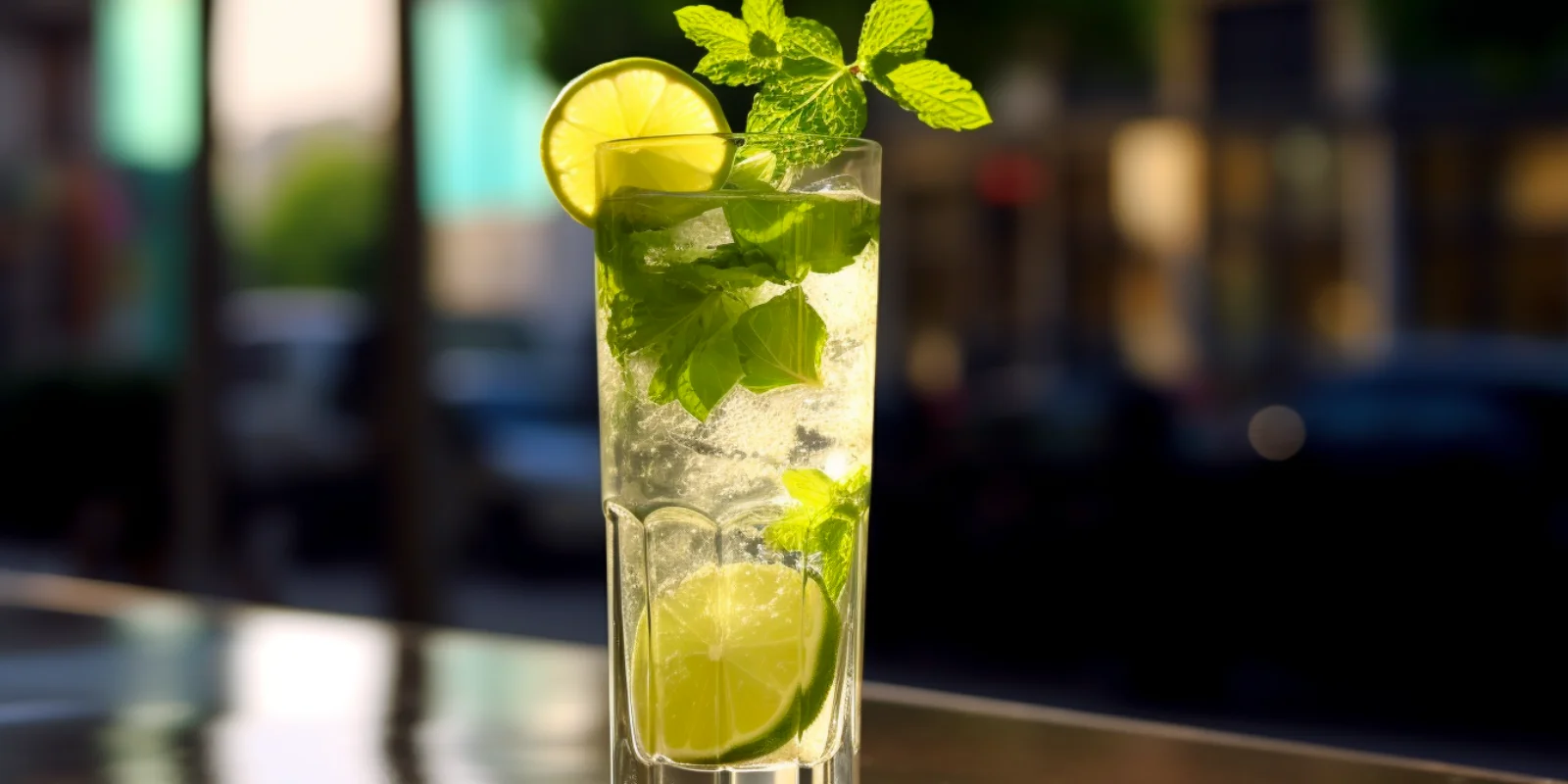Step into the effervescent world of the Moscow Mule, a cocktail that dances with history and sings with flavor. Born in the heart of Hollywood, this dynamic blend of vodka, ginger beer, and fresh lime juice swept across the United States in a copper mug, leaving a trail of high spirits and invigorated taste buds. Whether you are a cocktail connoisseur or a curious newbie, the traditional Moscow Mule recipe, with its refreshing taste and captivating story, is a drink that invites you to raise a glass to the art of mixology.
Let’s travel together on a journey of taste and time, venturing back to the sultry, sun-kissed streets of Havana, Cuba. This is a place where music spills from every corner, where pastel-colored buildings line the cobbled streets, and where the Mojito, one of the world’s most cherished cocktails, was born. Yes, we’re here to learn how to make a traditional Mojito, an elixir that, when made correctly, feels like a Caribbean vacation in a glass.

The Birth of a Cuban Classic: The Mojito’s History
The Mojito’s roots are steeped in history and folklore, with origins that can be traced back to the 16th century. It’s said that the Mojito, as we know it today, evolved from “El Draque,” a medicinal concoction named after Sir Francis Drake, the famous English privateer. The original mixture was a blend of crude rum, sugar, lime, and mint, ingredients native to Cuba and known to ward off diseases like scurvy.
Fast-forward to the early 20th century, when the Mojito began to gain international fame. It was the preferred drink of author Ernest Hemingway, who was a regular at La Bodeguita del Medio in Havana, a bar that claims to be the birthplace of this refreshing cocktail. His endorsement certainly played a part in the Mojito’s global spread and enduring popularity.
The Magic of Making a Traditional Mojito
The beauty of the Mojito lies in its simplicity. At its core, a Mojito requires just five key ingredients: white rum, sugar, lime juice, mint, and soda water. So, how to make a traditional Mojito? Let’s get shaking!
Preparation Time: 10 minutes Serving Size: 1 cocktail
Ingredients:
- 2 ounces of white rum
- 1 ounce of fresh lime juice
- 2 teaspoons of granulated sugar
- 6-8 fresh mint leaves
- Soda water
- Ice cubes
- Mint sprig and lime wedge for garnish
Instructions:
- In a sturdy glass, add the sugar, fresh lime juice, and mint leaves.
- Using a muddler, gently crush the mint leaves with the sugar and lime juice. This process, known as “muddling,” releases the aromatic oils from the mint, creating a flavor foundation for your cocktail.
- Fill the glass with ice cubes. Pour the white rum over the ice.
- Top the cocktail with soda water and give it a gentle stir to combine the ingredients.
- Garnish your Mojito with a sprig of mint and a lime wedge. Enjoy the refreshing taste of one of Cuba’s greatest gifts to the world!
That’s how to make a traditional Mojito, a process as enchanting as the history of the cocktail itself. But the joy of the Mojito doesn’t stop at tradition. This versatile cocktail has inspired countless variations around the globe.
What Glass is Traditional for Serving the Mojito?
Yes, the traditional glass for serving a Mojito is a highball glass. This type of glass is tall and straight-sided, which makes it perfect for showcasing the beautiful layers of a Mojito and leaves plenty of room for the essential topping of soda water.
The highball glass typically holds around 8 to 12 ounces, which accommodates the Mojito’s ingredients nicely, including the muddled mint leaves and lime, rum, sugar, and ice, all topped off with a splash of soda water. The extra space also allows for a good mix of the ingredients when stirred, ensuring that the flavors meld together well.
However, while the highball glass is traditional, the Mojito can be served in various other glasses, including Collins glasses or any other tall glasses. As long as there’s enough room for all the ingredients and some stirring, you’re good to go.
Remember, the glass does contribute to the overall experience of the cocktail, not just in terms of presentation but also in how the drink is consumed. The tall, slender shape of the highball glass helps to keep the drink cooler for longer and allows for a good balance between the different flavors as you sip.
Can Simple Syrup Be Used In Place of Sugar?
You can use simple syrup instead of granulated sugar to make a mojito, however the granulated sugar does help to muddle the mint when making a mojito. So, it’s best to stick with the sugar here.
When to Use Simple Syrup in Cocktails
Substituting simple syrup for granulated sugar in cocktails is quite common and usually works well. The advantage of simple syrup is that it’s already dissolved, which ensures that the sweetness is evenly distributed throughout the drink. This is especially useful in cold drinks, like most cocktails, where granulated sugar can sometimes have difficulty dissolving.
Simple syrup is a 1:1 solution of sugar dissolved in water, and it’s often used in cocktails as it blends more easily than granulated sugar.
For a recipe which calls for 2 teaspoons of granulated sugar, you can substitute it with about 1 to 1.5 tablespoons of simple syrup. This is because simple syrup is less sweet than an equal volume of granulated sugar due to its water content.
However, there are a few cases where you might not want to substitute simple syrup for granulated sugar:
- Texture: In some cocktails, the texture of the granulated sugar can play an important role. For instance, in a traditional Caipirinha, the granulated sugar helps to muddle or “bruise” the lime, releasing the essential oils. In such cases, substituting simple syrup could alter the cocktail’s texture and flavor.
- Flavor: Granulated sugar, especially if it’s raw or turbinado sugar, can sometimes contribute a distinct flavor that simple syrup might not replicate.
- Visual Appeal: In certain cocktails, like an Old Fashioned, seeing the sugar at the bottom of the glass as it slowly dissolves can be part of the appeal.
So, while substituting simple syrup is generally fine, and often preferred, there may be certain situations where using granulated sugar is more appropriate. It often comes down to the specific cocktail and personal preference.
Global Twists: Mojito Variations Around the World
While the traditional Mojito is a Cuban classic, cocktail enthusiasts worldwide have put their spin on this beloved drink. Here are some popular variations:
1. Strawberry Mojito: A sweet twist on the traditional Mojito, this variation incorporates fresh or muddled strawberries for a fruity, summer-ready cocktail.
2. Coconut Mojito: Swap the soda water for coconut water, and you have a tropical delight. Some even add a splash of coconut rum for an extra exotic touch.
3. Spicy Mojito: For those who like a kick in their drink, adding a slice of jalapeno or a dash of hot sauce to your Mojito can create a thrilling hot and cold contrast.
4. Elderflower Mojito: A dash of elderflower liqueur adds a sophisticated floral note to the traditional Mojito, making it an elegant cocktail choice.
5. Virgin Mojito: Also known as a “Nojito,” this is a non-alcoholic version of the Mojito, perfect for those who want to enjoy the refreshing taste without the alcohol.
So, now you know how to make a traditional Mojito and some of its popular variations. Whether you stick to the classic recipe or experiment with different flavors, the Mojito offers a world of refreshing possibilities.
From its humble beginnings in Cuba to its global recognition today, the Mojito has proven that it’s more than just a cocktail. It’s a testament to the magic that happens when simple ingredients are combined with passion and creativity. So, the next time you’re mixing up a Mojito, remember, you’re not just making a cocktail, you’re stirring up a slice of history.
Watch the Video Recipe!
We don’t have a video recipe for the Mojito cocktail yet! In the meantime, check out the video for our Italian hot chocolate recipe:
Subscribe to our YouTube Channel
More video recipes? Subscribe to our YouTube Channel (it’s FREE) and click the bell to get notifications when we release a new video recipe!
As an Amazon Associate, we earn from qualifying purchases. This means at no extra cost to you, PIATTO may earn a small commission if you click the links and make a qualifying purchase.
Mixing up Magic: How to Make a Traditional Mojito
Equipment
- 1 muddler for bruising the mint to release its flavor
- 1 sturdy glass highball glass is classic here
Ingredients
- 2 oz white rum
- 1 oz fresh lime juice
- 2 tsp granulated sugar
- 7 leaves fresh mint
- soda water
- ice cubes
Instructions
- In a sturdy glass, add the sugar, fresh lime juice, and mint leaves.1 oz fresh lime juice, 7 leaves fresh mint, 2 tsp granulated sugar
- Using a muddler, gently crush the mint leaves with the sugar and lime juice. This process, known as “muddling,” releases the aromatic oils from the mint, creating a flavor foundation for your cocktail.
- Fill the glass with ice cubes. Pour the white rum over the ice.ice cubes, 2 oz white rum
- Top the cocktail with soda water and give it a gentle stir to combine the ingredients.soda water
- Garnish your Mojito with a sprig of mint and a lime wedge. Enjoy the refreshing taste of one of Cuba’s greatest gifts to the world!

